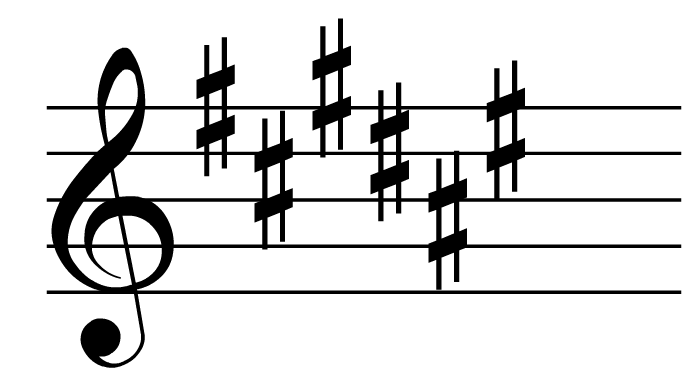


For example: a key signature of one sharp is either G major or E minor. One can tell from the key signature what key a piece is in so long as one knows whether it is major or minor (see “ mode”). It is easier to read the music if it is written in A flat major (4 flats). Another reason for changing the key signature might be that the music has modulated to a key like G sharp major with eight sharps (including a double sharp). If the music is going to stay in the new key for some time the composer may decide to change the key signature. Sometimes music changes key ( modulates) during a piece. The time signature, however, is only written at the beginning of the piece (the order is: clef – key signature – time signature). This helps the player to remember what the key signature is. Key signatures are written at the beginning of each line of music. An F double sharp is an F sharp that has been sharpened. There are also double sharps (the sign looks like an x) and double flats (two flat signs). If he wants an F instead of the usual F sharp he writes a natural sign.

If he wants a B flat he has to write it in. This will last for the rest of the bar (measure). If the composer wants a C sharp he writes a sharp sign in front of the C that needs to be sharpened. As an example: in a piece in G major all Fs are F sharps. An accidental is always written before the note it belongs to (we say “C sharp” but we write the sharp sign and then the note C). If the composer wants any extra sharps or flats during the piece, or he wants to cancel the ones in the key signature, these can be written in the music. This helps to understand the music better. Secondly, it helps the player to think in the key (music) of the piece. Firstly, it saves writing out lots of sharps or flats during the piece. There are two reasons for writing a key signature. The reason why there are fifteen and not twelve is because three of them have two possible names: F sharp major (6 sharps) can also be called G flat, C sharp is D flat and B is C flat. There are fifteen possible key signatures: up to seven sharps, up to seven flats, or no sharps or flats. Each minor key shares a key signature with one of the major keys. The relationship between the keys is explained in the article " circle of fifths". Each major key has its own key signature. This is because a scale can start on any note, and there are twelve notes within an octave: seven white notes and five black notes on a keyboard. There are twelve major and twelve minor keys (properly called “ modes"). It means that every time the note F is written one plays (or sings) an F sharp (on a keyboard: the black note just to the right of the F) instead. For example: if there is one sharp in the key signature it will be an F sharp. It shows which notes have to be changed into sharps or flats. A key signature is a group of sharps or flats which are printed at the beginning of a line/measure of music.


 0 kommentar(er)
0 kommentar(er)
